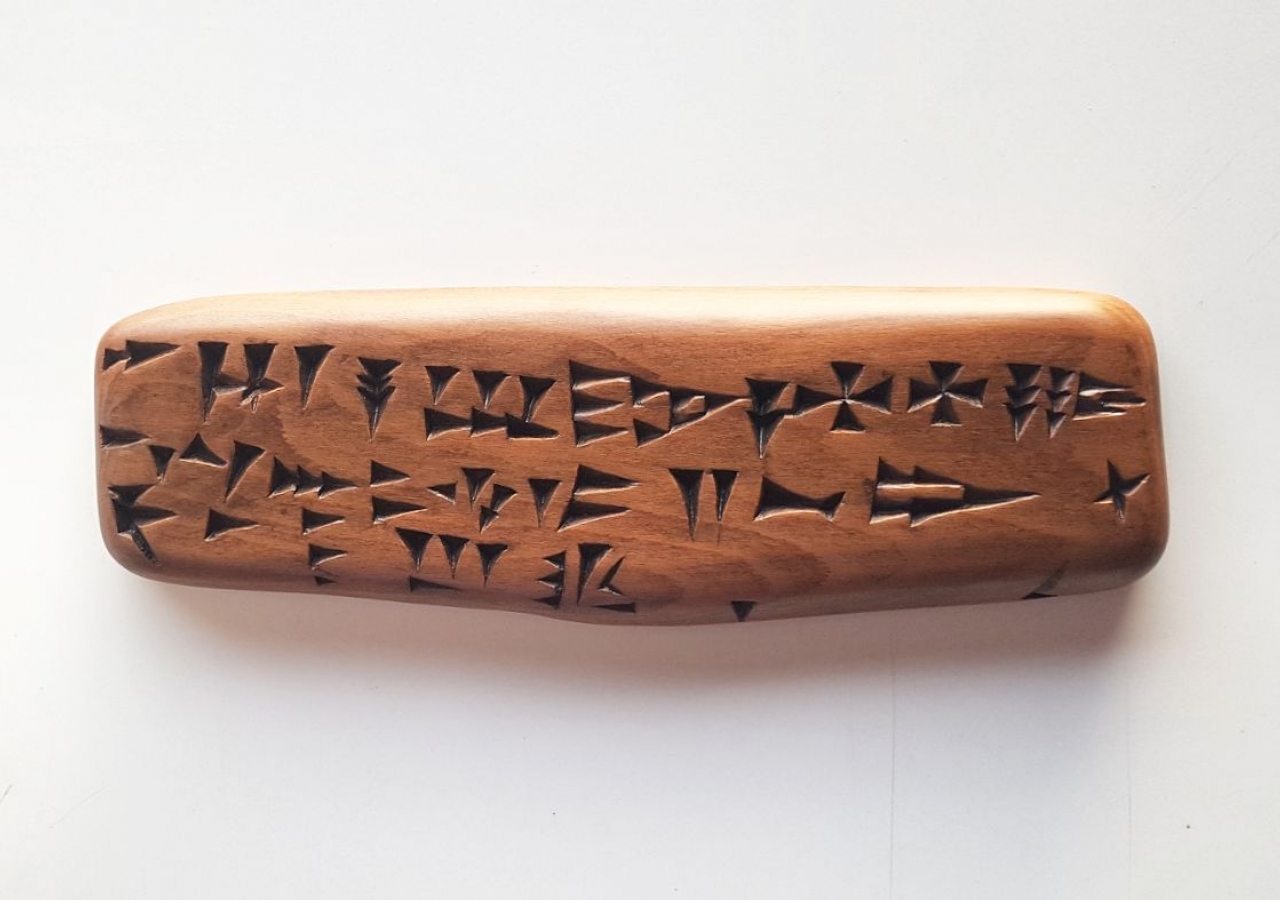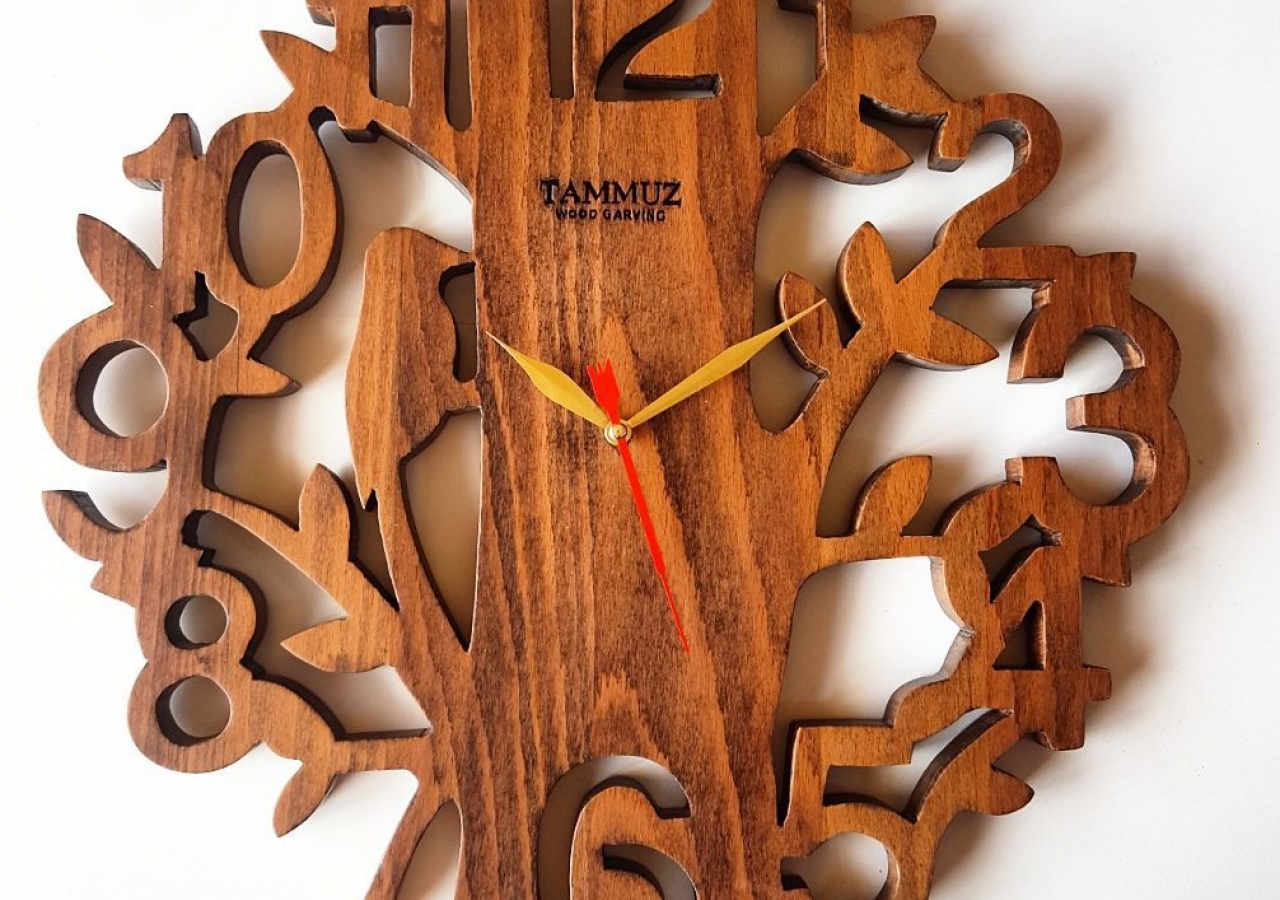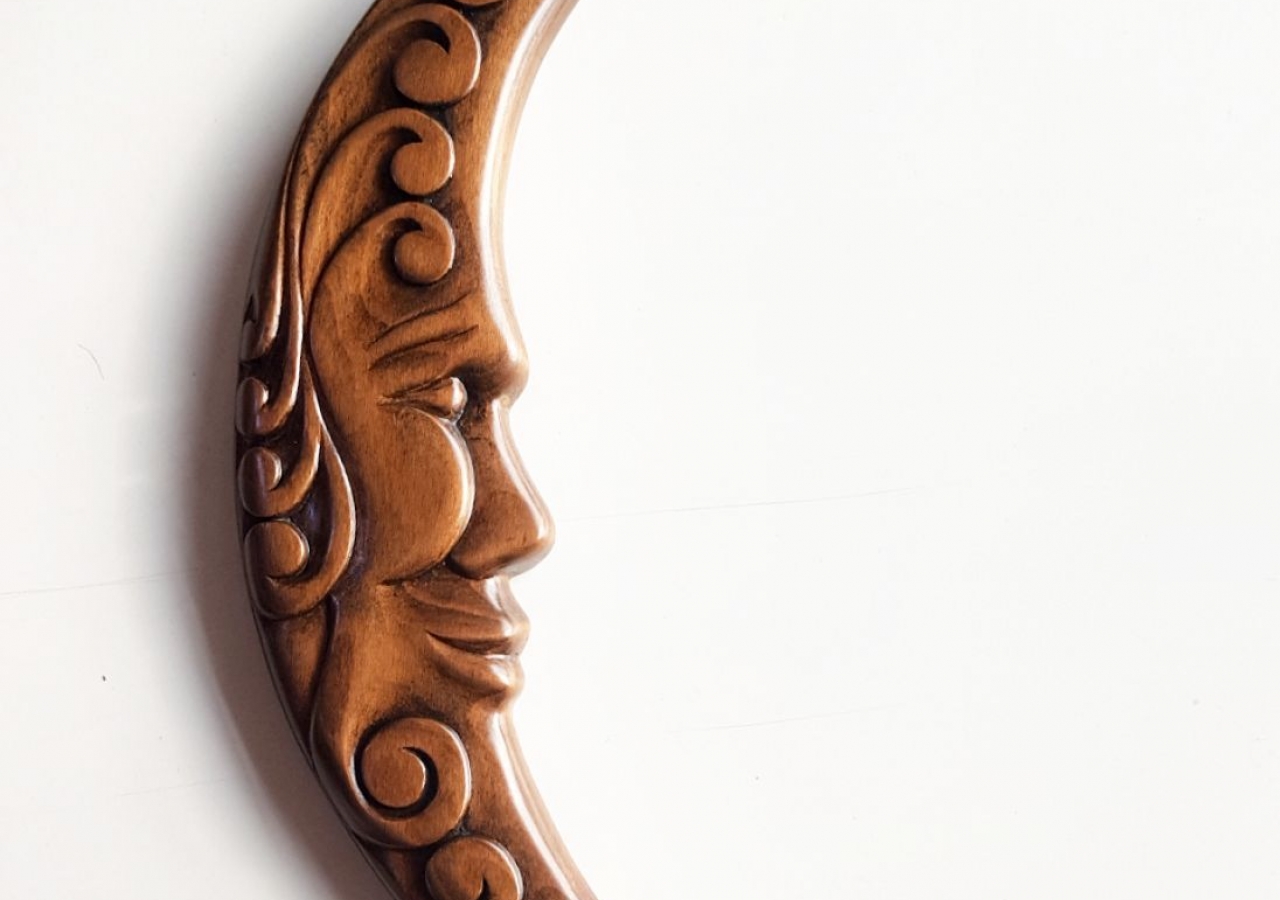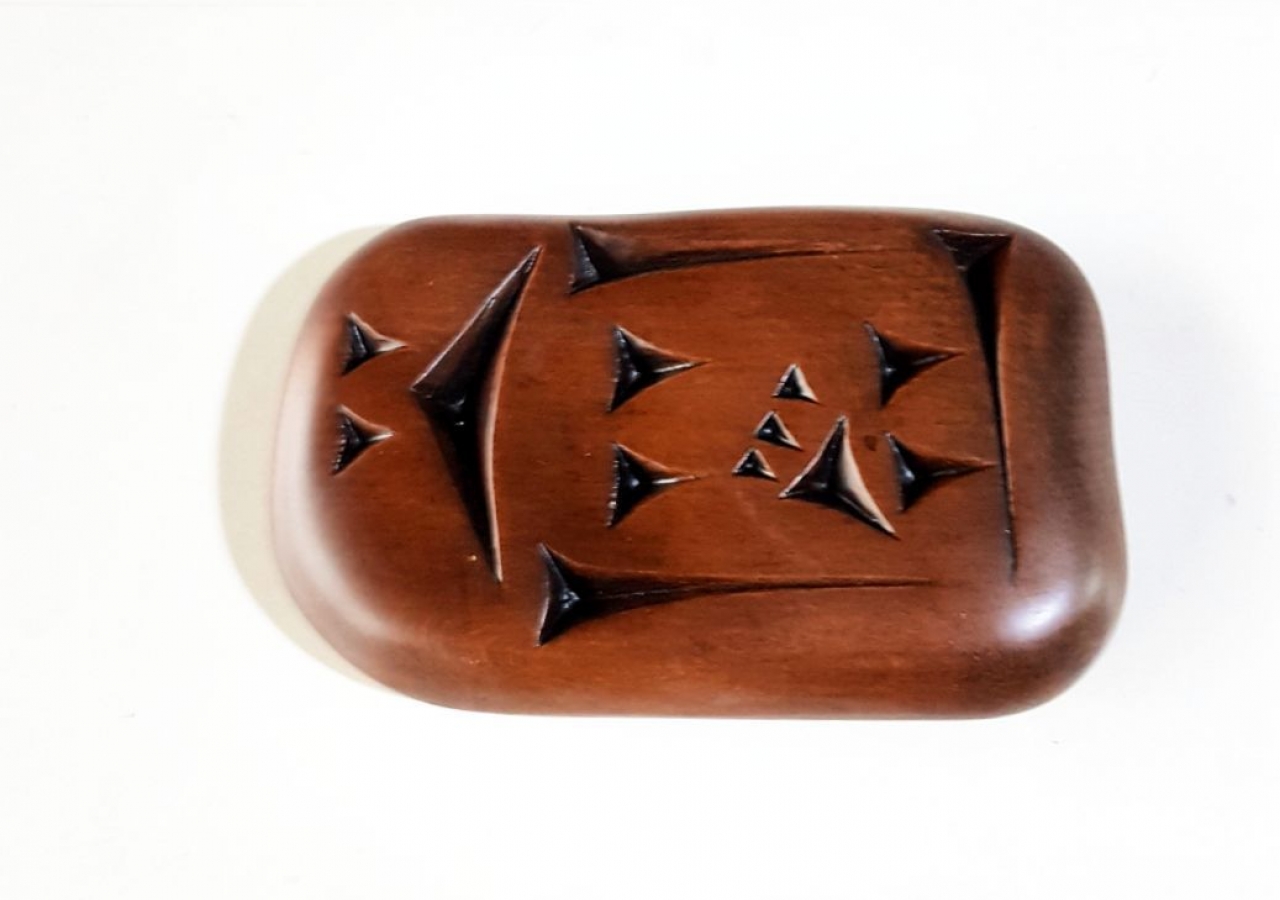تكشف الأعمال الخشبية للنحات والفنان وسيم ديب عن موهبة فطرية فنية إبداعية بدأ بتطويرها والعمل على صقلها من خلال تمازج معرفته العلمية والتاريخية التي حصل عليها بدراسته الجامعية في كلية الآثار بحلب وإسقاط تلك العلوم المعرفية، عن الحضارات وأبجدياتها برقمها المسمارية وخطوطها وصولاً للحضارة الإسلامية، على منحوتاته الفنية التي سخّر لها كل قدراته وطوّعها بأنامله لينتج تحفاً فنية تضاهي أعمال الفنانين الكبار. ينحدر من عائلة من مدينة سلمية وهو من مواليد 1980 وهو خريج كلية الآثار والمتاحف من جامعة حلب ومقيم ويعمل في مدينة حلب السورية التي تشتهر بالصناعات والفنون التي شكلت حافزاً له لكي يطوّر هوايته بالنحت على الخشب
يقول وسيم: قد عملت على تطوير هوايتي في محاولة لوضع بصمة لي على الأعمال الخشبية التي أقوم بنحتها يدوياً وبأزاميل معدنية خاصة على أخشاب متنوعة مثل خشب الزان والسنديان أو أنواع أخرى من الأخشاب حسب الحاجة بالإضافة لمحاولة الدمج بين دراستي الجامعية (الآثار) وبين الحفر الخشبي
ويضيف: أنجزت أول منحوتة لأبجدية مسمارية والتي انطلقت من سورية (أبجدية أوغاريت) بالإضافة لبعض الألواح المسمارية الأخرى وتناولت بعض الثقافات الأخرى من خلال آثارها بالإضافة لمنحوتات تجسد روعة وتنوع الخطوط العربية المختلفة من خلال كتابة بعض أبيات الشعر أو المقولات المشهورة باستخدام الخط الكوفي المربع أو خط الثلث واستطعت تطويع الأخشاب لإخراج الأشكال النباتية على سبيل المثال (منحوتة شجرة الحياة) التي هي تعبير عن ارتباطنا بالأرض وارتقائنا إلى السماء من منظور فني
هل حاولت الاستفادة من أعمالك كمردود مادي؟-
" بعد نحت بعض الأعمال وتجسيد الأفكار على الأخشاب قمت بعرض منتجاتي التي لاقت استحسان من حولي وإعجاب كل من شاهدها مما دفعني لتطوير هذه الهواية لتصبح مهنة وبعد انحسار الأعمال اليدوية مقابل العمل الآلي بشكل شبه كامل أصبح من النادر وجود أعمال يدوية كاملة فزادت الرغبة في الحصول على هذه القطع اليدوية التي تختلف كل قطعة عن الأخرى ولو بتفاصيل صغير
لماذا أطلقت اسم تموز على منحوتاتك وأعمالك الخشبية وماذا تقصد به؟-
أجاب: أطلقت على المنتجات التي أصنعها يدوياً اسم تموز لأن هذا الاسم مستمد من الإرث السوري، وهو شخصية سورية قديمة يحتل اسمها الشهر السابع من الأشهر السورية بالإضافة إلى بعض الأساطير المحاكة حوله من كونه أحد أسباب الخصب ومن صفاته الوفاء والعطاء. فاتخذت منه اسماً للمنتج كتعبير عن ترابط التاريخ بالحاضر بأيادٍ سورية
ما هي المعوقات والتحديات التي تواجهها في عملك؟-
"نحن نعيش في بلد أثّرت الحرب في جميع تفاصيله، والذي أقوم به الآن هو محاولةٌ - مثل جميع أبناء وطني - لإعادة الحياة بشكل أفضل. تحدياتنا تتمحور بضعف القدرة الشرائية للراغبين في اقتناء هذه المنتجات التي تعدّ هي من الكماليات في بلد أثرت فيها الحرب، وصعوبة التسويق في ظل الأوضاع القائمة وصعوبة تأمين المواد الأولية للعمل. وأرجو أخيراً أن تأخذ الأعمال اليدوية حيزاً أكبر في حياتنا لأنها تعبر عن الإنسان الصانع بكل ما يحمل من مشاعر إنسانية وفكر
ويبقى لأعمال الفنان وسيم ديب تميز لافت في التعبير عن مكنوناته وتجسيد ما يفكر فيه ويحسّ به من خلال أدوات يدوية بسيطة تتناغم مع مهارة أصابع استطاعت بحنانها مرة وقوّتها مرات تحويل قطع أشجار خشبية بسيطة لتحف فنية فريدة
The woodwork of the sculptor and artist Waseem Deeb reveals an innate creative artistic talent that he began to develop and refine by mixing his knowledge of history with the knowledge he obtained from his university studies at the Faculty of Archeology in Aleppo. Likewise, he harnessed all his abilities and knowledge to produce masterpieces comparable to the works of great artists. He is originally from Salamieh city,1980. He currently lives and works in Aleppo, which is famous for the industries of handicrafts and arts the thing that pushed him forward to excel in wood carving within this convenient environment.
Wassim says: "I worked on developing my hobby in an attempt to put my imprint on the woodwork that I crave. Also, I crave manually and with special metal chisels on various woods such as beech, oak and other types of wood as needed. In addition to that, I am trying to integrate my university specialization (Archeology) with woodcarving.
He adds: "I made the first sculpture of cuneiform alphabet that started in Syria (the Ugarit alphabet) in addition to some other cuneiform tablets as I added things from other cultures. I made some sculptures that symbolize the magnificence and diversity of different Arabic fonts by writing some verses of poetry or famous sayings using square Kufic script. Furthermore, I was able to twist wood to bring out shapes of plants. For instance, the Tree of Life as a symbol of our attachment to the Earth and our ascent to sky (from an artistic perspective).
He added "After carving some works and embodying thoughts on wood, I presented my products that were appreciated by those around me, this appreciation and admiration have prompted me to develop my hobby to become a profession. After manual work had become scarce because of the depending on the automated one, it became rare to have pure manual work, so I strongly tried to make these hand pieces that differ from each other, even in small details
I gave my sculptures and woodwork the name Tammuz, because this name is derived from the Syrian heritage. In other words, Tammuz is an ancient Syrian figure whose name represents the seventh month of the Syrian months, in addition to some myths made up as one of the causes of fertility. Moreover, the figure has two characteristics which are loyalty and giving, so I named my brand Tammuz as an expression of the link between the past and the present.
However, I face some difficulties and challenges at first. We live in a country where the crisis has affected all its details and what I am doing now is an effort like all of my countrymen to better restore life. Our challenges are centered on the weak purchasing power of those wishing to purchase these products which are considered luxuries in a country where the crisis has severely affected. Similarly, it was quite difficult to do marketing as well as it was also hard to gain the raw materials for work. Fortunately, I feel that handicrafts will be more significant in our lives because they express the human being, the maker, with all the humane and intellectual feelings he/she carries.
The work of the artist Waseem Deeb still has a remarkable distinction in expressing his potential and embodying what he thinks and feels through simple hand tools that are in harmony with the skill of fingers, which have been able by kindness once and strength multiple times to transform simple wood to unique artifacts.












